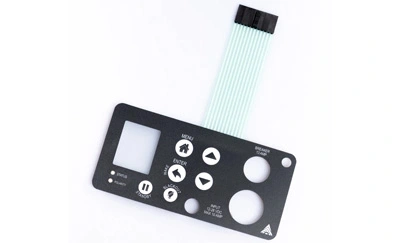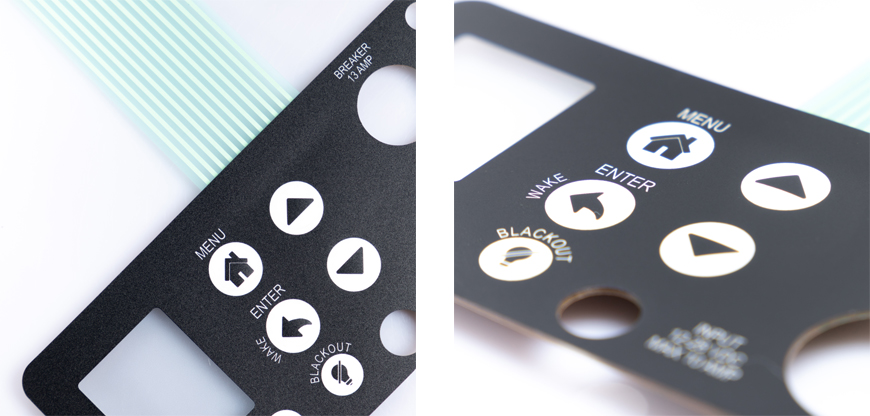
In the ever-evolving landscape of technology and user interface design, flexible membrane switches have emerged as a pivotal component that bridges the gap between human interaction and electronic devices. These slim, adaptable, and highly customizable interfaces have found their way into numerous applications, from household appliances to industrial machinery. In this article, we will delve into the fascinating realm of flexible membrane switches, exploring their construction, applications, benefits, and the innovative future they promise.

Flexible membrane switches, often referred to as membrane keypads, are user interface devices composed of multiple layers of flexible materials. These layers typically include polyester, polycarbonate, or silicone rubber, which are printed with conductive traces and assembled into a single, flexible unit.
The functionality of a flexible membrane switch relies on the principle of capacitance. When a user applies pressure to a specific area of the switch, it deforms, causing the conductive layers to come into contact. This change in capacitance is then detected by the electronics, registering a keystroke or command.
1. Graphic Overlay: The top layer of the switch featuring graphics, labels, and icons.
2. Overlay Adhesive: An adhesive layer that bonds the graphic overlay to the circuitry layer.
3. Circuitry Layer: The conductive traces and contact points that facilitate electrical connections.
4. Spacer: A layer that maintains the separation between the upper and lower circuit layers.
5. Lower Circuit Layer: The bottom conductive layer responsible for completing the electrical circuit.
Flexible membrane switches have found their way into various industries due to their versatility and durability.
1. Medical Devices
In the medical field, membrane switches are used in devices like infusion pumps and diagnostic equipment. Their flat, easy-to-clean surface makes them ideal for maintaining hygienic conditions.
2. Industrial Control Panels
Manufacturing and automation industries rely on membrane switches for control panels. They can withstand harsh environments and are resistant to dust, moisture, and chemicals.
3. Consumer Electronics
Many household appliances, such as microwave ovens and remote controls, utilize membrane switches for their user interfaces. They provide a sleek and user-friendly experience.
4. Automotive Applications
Flexible membrane switches are incorporated into automotive dashboards and controls. They are known for their longevity and resistance to wear and tear.
1. Customization
Membrane switches can be tailored to meet specific design requirements. Graphics, icons, and backlighting options offer limitless customization possibilities.
2. Durability
These switches are designed to withstand millions of actuations, ensuring long-lasting performance even in demanding environments.
3. Cost-Efficiency
Manufacturing membrane switches is cost-effective, making them an economical choice for both small and large-scale production.
4. Easy Maintenance
Their smooth, sealed surface is easy to clean and highly resistant to moisture and contaminants.
As technology continues to advance, so do flexible membrane switches. Future developments may include even thinner and more flexible materials, enhanced tactile feedback, and advanced integration with touchscreens and IoT devices. These innovations will further solidify the position of membrane switches as essential components of human-machine interfaces.
Flexible membrane switches have come a long way from their inception and have become indispensable in various industries. Their adaptability, durability, and cost-effectiveness make them a top choice for designers and engineers looking to create seamless user experiences. As technology progresses, we can only expect these switches to become even more integral in our daily lives.
1. Are flexible membrane switches resistant to water and dust?
Yes, flexible membrane switches are highly resistant to water, dust, and contaminants, making them suitable for various environments.
2. Can I customize the appearance of a membrane switch?
Absolutely! Membrane switches offer extensive customization options, including graphics, icons, and backlighting.
3. Are membrane switches suitable for high-temperature applications?
Membrane switches can be designed to withstand high temperatures, making them suitable for various industrial applications.
4. What is the lifespan of a typical membrane switch?
A well-designed membrane switch can endure millions of actuations, ensuring a long lifespan.
5. Are there any limitations to the flexibility of membrane switches?
While highly flexible, membrane switches do have limits to their bending capabilities. Design considerations should be taken into account for extreme flexibility requirements.